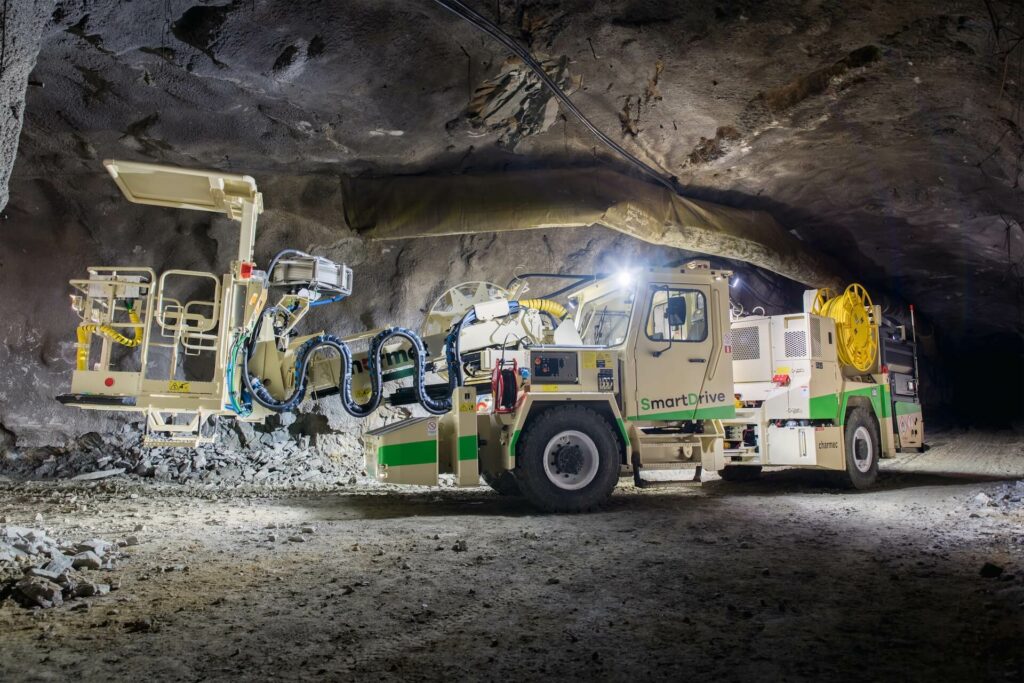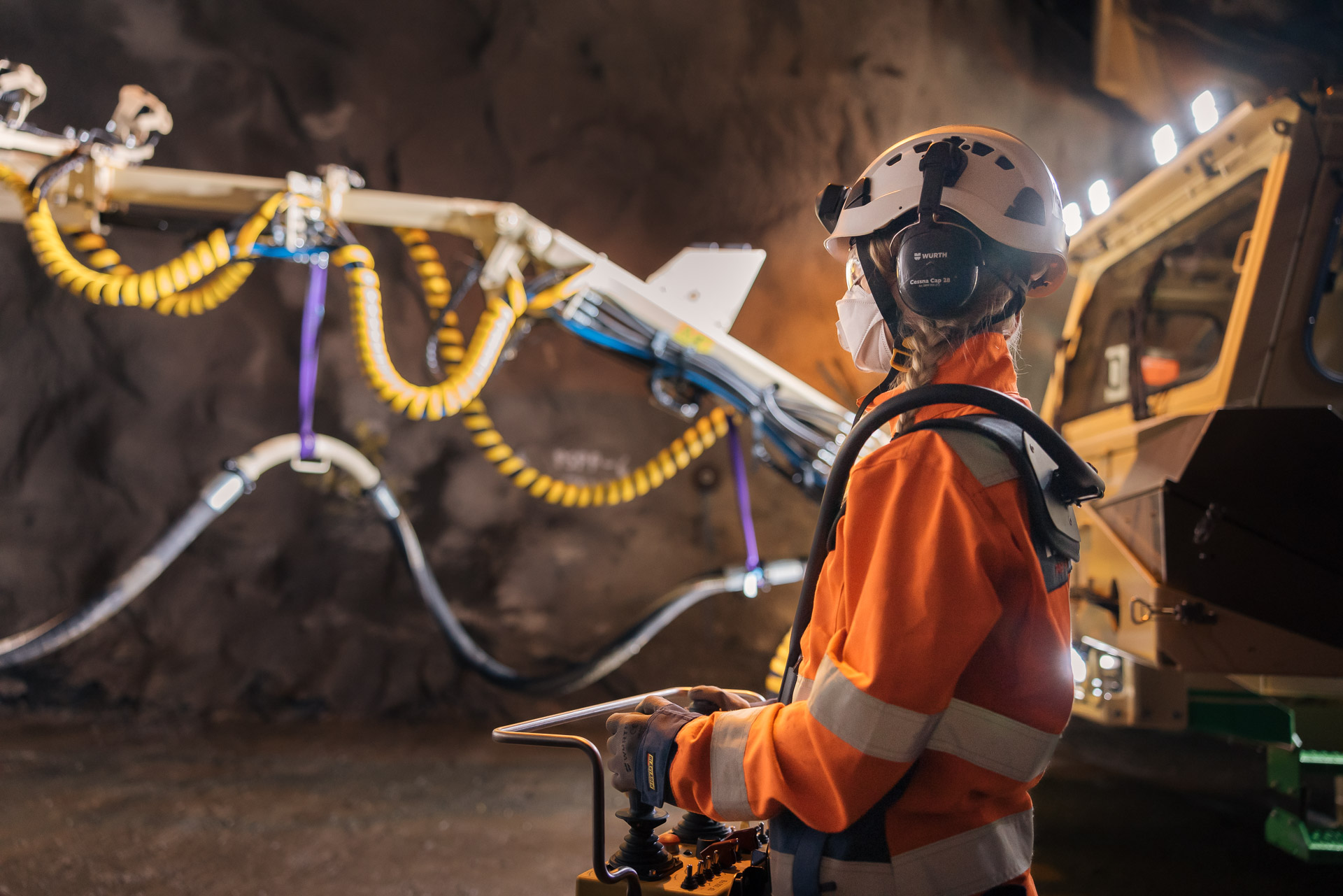When a company decides to renew its ERP system, it usually faces an extensive and long-term project that requires a lot of resources over several years. ERP can mean an investment of hundreds of millions for the company. However, that investment is worth it. The mining technology company Normet is a prime example of how a global growth company with 1,800 employees operating in over 30 countries has succeeded in transforming and renewing its ERP system.
Normet is based in the City of Iisalmi in Finland and has grown strongly in recent years through international acquisitions. As a result, the company had to harmonise its business processes, operating methods and cultures.
The key to this development has been that the new ERP system drives growth and is implemented as a function for the entire company,” says Suvi Eväkoski from Normet. Eväkoski leads the company’s IT Project Management Office and is responsible for the challenging ERP project.
The project started at the beginning of 2020. Almost five years later at the end of 2024, the company reached the first significant milestone when the ERP built on Microsoft’s D365 software was deployed in Finland.
“The system was deployed on schedule at the end of October. From the personnel’s perspective, the reform was very successful,” Suvi Eväkoski says happily.
“The new ERP also strongly supports our company’s growth goals.”
ERP change must put people first
Normet decided to consider change management right from the start of the project and worked with Gofore to help with human-centric change management.
To understand the importance of a human-centric approach and change management in Normet’s ERP system project, we need to go back a few years in the story.
Normet had already done ERP reform work from 2018 to 2019. The system had been depoyed to seven different countries when the decision was made to suspend the project. The implementation had not progressed as hoped, and there were no longer any conditions seen for its success. The project was put on hold.
According to Suvi Eväkoski, the decision was justified and there were several factors leading up to it.
The multi-vendor environment did not work consistently, there was no unifying global goal or internal team, the user training was insufficient, no systems had been defined,” she explains.
“The biggest pitfall was that the project was not managed locally or with a human-centric approach. Instead, it was managed centrally from a top-down perspective by the global function. We did not do enough to involve our people in different roles in the change from the start. We learned and decided to start again from scratch.”
Define, outline, assign responsibilities
To make large-scale business projects such as ERP successful, it is crucial that we implement the change with a human-centric approach,” says Saara Lehmuskoski, Senior Consultant at Gofore.
“No system can be deployed simply by focusing on functional technology. Future users must be informed early, so they understand what the change is about, how it benefits the company and how it affects their daily work. They must also receive adequate training before deployment and enough support after deployment. This requires articulating and concretizing the change, as well as communication, dialogue, participation and training.”
The change is about transforming business, IT, and above all, ways of working. According to Lehmuskoski, the technical system creates the foundation, but the project should definitely be seen as a business transformation project. The focus should be on new business processes, roles and operating methods, and last but not least, the company’s customers.
“When employees understand the benefits of the change and are allowed to participate in the journey at the right time, the sense of ownership and motivation to embrace new things increase significantly. Management and supervisors play an essential role in all of this as change leaders: that cannot be outsourced to a project or consultants. Employees want to hear about the change, as well as its benefits and details from their own management and supervisors.”
Normet has now defined for example, new process roles and ownerships, outlined the responsibilities of process managers, and clarified how process roles differ from job roles. The responsibilities of different roles have been described and articulated, and it has been explained what a production planner, warehouse worker, or warehouse manager does at Normet.
Normet has also established a key user network and a standardised operating model for it. Management and supervisors have been supported to talk about the change in their respective teams.
“All levels and roles in the organisation have been included in defining the change and committed to its implementation. A change this big requires time and resources from the company, so we have used a role-level training plan to concretely show what and how much is required to train a certain role or end user. We have concretized and articulated the change by communicating what will change, when the change will happen, what it means, who it affects or what a specific role needs to do differently in the future”, says Saara Lehmuskoski.
The change often becomes concrete when employees start working in their new roles as planned. Suvi Eväkoski says that a new key role in Normet’s transformation has been the key user.
“Our change agents train end users in the new operating models, processes and IT systems. In addition, business operations have appointed separate process area owners who are responsible for the cooperation communication and flow of information between the business and IT in their teams. We have trained a total of about 500 end users in Finland. There have been a little over one hundred training events,” says Suvi Eväkoski.
Normet is particularly happy with the fact that business continued uninterrupted during the ERP implementation. The factory was closed for an exceptionally short period – only four days, from Thursday to Sunday. The first machine was sent out to the customer the day after deployment.
The investment is extensive and significant for Normet, and considerable resources are being allocated to it. The project is also reported regularly to the company’s Board of Directors, for example.

Change fatigue is inevitable
ERP projects that last for years require resilience and perseverance. Gofore’s Saara Lehmuskoski is a long-term change consultant who has managed changes in different industries.
She knows from experience that change fatigue, frustration and lack of faith will inevitably hit at some point – which is very understandable.
“If we notice these things as early as possible, we can quickly find ways to support and help people. It is important that management and first-line supervisors have a continuous dialogue with employees. It’s easier to stay on top of things when you measure people’s experience of the change. That way, change management support measures can be focused where they are most needed. Data-driven management is also important in times of change.”
Normet’s ERP reform has now been successfully implemented in Finland, and the goals of the first phase have been achieved. Perseverance is still needed as the work progresses globally. In 2025, ERP will be taken to India, Austria, Switzerland and the UK. The reform for Australia and African countries is scheduled to start in late 2025.
Suvi Eväkoski says that at this pace, up to 90% of Normet’s business operations will be in the new system by the end of 2026.
Normet will cross the finish line in 2027. At that point, Normet’s ERP will be in use globally.
“Better and more precise customer relationship management, where data gives us a clear overall view of the customer experience and of how we can make it as good as possible,” says Suvi Eväkoski.
Normet
- Leading technology company developing innovative solutions for the mining, tunnelling and construction industries.
- Operating globally in over 30 countries and 50 locations.
- Over 1 800 employees.
- Net sales 2023 EUR 484 million
- CEO Ed Santamaria
Cornerstones of a successful ERP renewal
- Focus on data: Renew your ERP system with a data-driven approach to ensure the integrity of business-critical data and its usability for people, processes, and artificial intelligence.
- Support people: Help them to adopt using the new system from the very beginning. Design the ERP system in a way that allows people to focus on value-adding tasks.
- Verify quality: Design testing and quality assurance from the outset, allocating sufficient time and budget for them. Quality deviations can jeopardise the success of the entire project.
- Achieve the desired benefits: Manage the realisation of benefits throughout the project by aligning project decision-making with the desired business outcomes. This ensures success on the first attempt.
Photo credit: Normet
